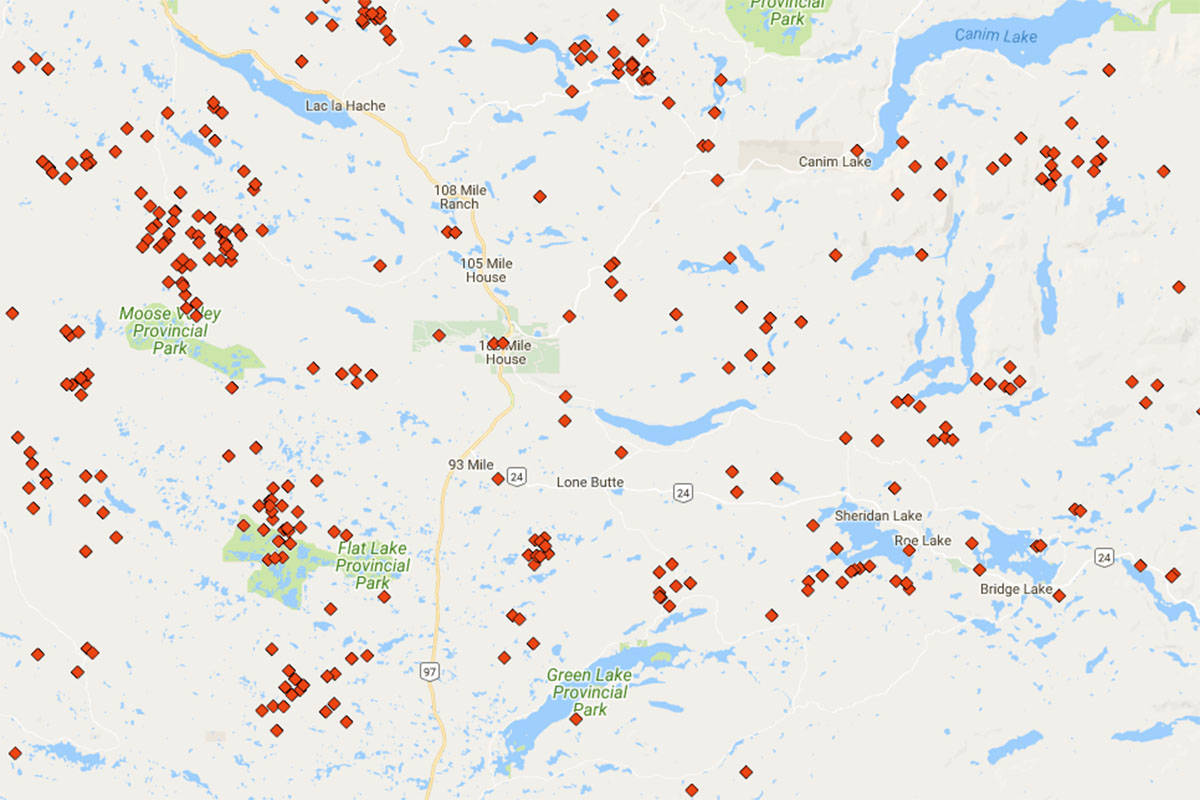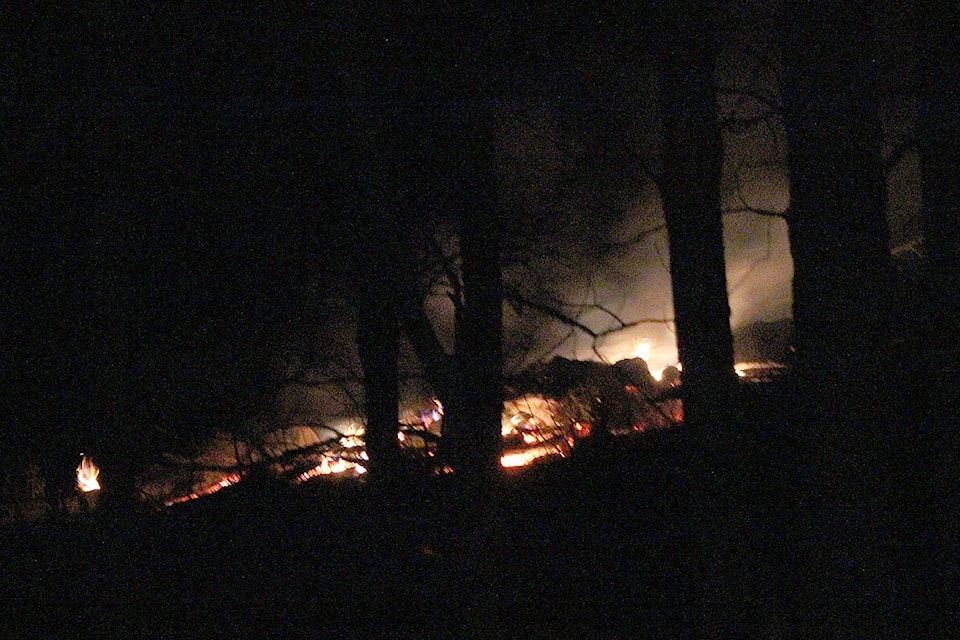The 100 Mile House Fire Rescue Department has been called out to burning piles in the past week.
It is the time of year people are pile burning now that the fire danger rating across the province is lower, according to Fire Information Officer Ryan Turcot.
“Anything larger than a category 2 fire, aka a category 3 fire, does require to be registered. There’s a burn registration line 1-888-797-1717 and basically, anyone conducting category 3 open burning has to register it into the open fire tracking system before they can go ahead with it.”
A category 3 fire is any fire larger than two metres high by three metres wide, three or more concurrently burning piles no larger than two metres high by three metres wide, one or more burning windrows or stubble or grass burning over an area greater than 0.2 hectares. Learn more.
If someone is wondering when they see a fire whether it’s a registered pile burning, they can check online on the BC Wildfire Service Open Fire Tracking System (OFTS) Registered Burn Locations map, says Turcot.
According to 100 Mile House Fire Chief Roger Hollander, there are a number of important things to keep in mind.
“Remain in attendance and monitor the fires as much as possible. Our department responds to many calls from people driving by a fire but because they don’t see anyone around they call 911. These calls could be avoided in many situations if the property owner or whoever is responsible for the fires remained close by.”
Within the District of 100 Mile House boundaries all burning requires a burn permit to be issued by the fire department, he says.
“Typically only campfires are permitted in the District of 100 Mile House which still require a burn permit. Permits are free and can be picked up at the District office, the fire hall, or emailed to the public.”
While the fire risk is lower and it is the time of year to burn, the public should not be complacent, says Hollander.
“All burning comes with a risk and we should help mitigate those risks by being prepared when regulations allow burning. This could include having water, tools, equipment, personnel etc. on hand to deal with the size of burning taking place. Damage can still occur to property when other combustibles ignite due to burning piles being too close for example.”

